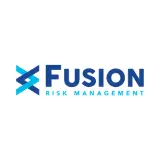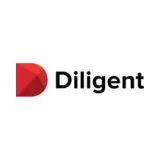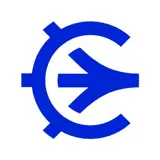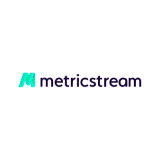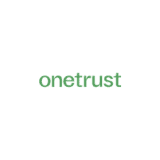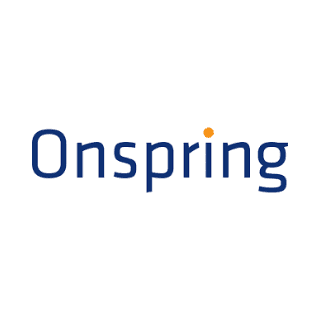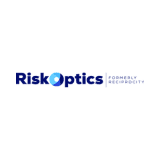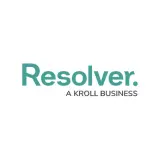SafetyCulture (formerly iAuditor) Enterprise Risk Management Software
SafetyCulture (iAuditor)


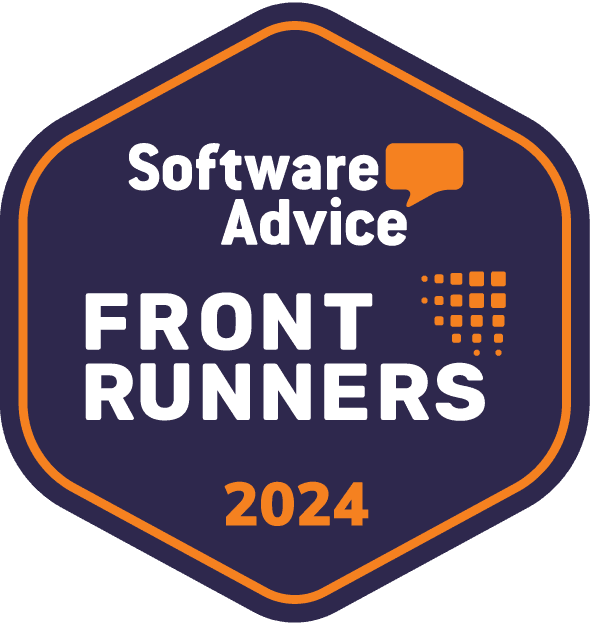
- Free Version: Available for teams of up to 10
- Pricing: Premium plan $24/month (with a free 30-day trial period)
- Platforms supported: Available on mobile app (iOS and Android) or a web-based software
Why use SafetyCulture?
SafetyCulture provides compliance managers, risk managers, C-suite executives, internal auditors, and insurance professionals with a powerful enterprise risk management platform to manage non-compliance to different International Organization for Standardization (ISO) standards such as ISO 31000 and other compliance requirements. The platform has a user-friendly interface and features to help organizations identify, assess, and mitigate risks effectively.
Features:
- Identify, analyze, and prioritize risks using pre-made risk assessment checklists to start your audit program quickly.
- Ensure compliance with the Food and Drug Administration (FDA), Occupational Safety and Health Administration (OSHA), and ISO standards using the platform’s customizable templates and digital assessment forms.
- Identify issues and assign action items to specific team members for quick resolution.
- Get real-time reports and analytics on critical risks, allowing you to make data-driven decisions.
- Reduce response time by communicating and collaborating with team members using Heads Up for risk assessment and progress updates.
Why use Fusion Framework System?
Fusion Framework System empowers users with objective risk insights to audit, analyze, and improve business operations. The platform also offers continuity planning capabilities, enabling users to prioritize actions based on dependency and what-if analysis rather than static plans. Additionally, the platform helps users set and maintain impact tolerances, allowing organizations to learn over time what they can withstand in the face of disaster.
Features:
- Risk management
- Crisis and incident management
- Resilience copilot
- Free Version: None
- Pricing: Custom pricing
- Platforms supported: Web
Why use Diligent One?
Diligent One offers comprehensive software tools to simplify and improve modern-day governance. The platform empowers leaders to manage risks, ensure compliance, drive efficiencies, and navigate constant change.
Features:
- Audit and analytics
- Policy management
- Internal controls management
- Free Version: None
- Pricing: Custom pricing
- Platforms supported: Web, On-premise, Android, and iOS
Why use Risk Cloud?
LogicGate’s Risk Cloud is a cloud-based platform revolutionizing how businesses manage governance, risk, and compliance processes. It combines expert-level content, service, and no-code technology to provide a holistic view of user risk programs. The platform offers identification, assessment, monitoring, documentation, action planning, and remediation capabilities.
Features:
- Risk quantification
- Third-party risk management
- Cyber risk and controls compliance
- Free Version: None
- Pricing: Custom pricing
- Platforms supported: Web
Why use MetricStream?
MetricStream offers a structured and systematic approach to managing organizational risks. Built on the intelligent M7 Integrated Risk Platform, it provides uniform risk assessment methodologies, enabling businesses to understand and gain visibility into top risks accurately. The platform offers multi-dimensional risk assessments based on qualitative and quantitative parameters, providing real-time insights into risk management programs.
Features:
- Integrated risk management
- Supplier risk and performance
- Digital risk resilience
- Free Version: None
- Pricing: Custom pricing
- Platforms supported: Web
Why use OneTrust?
OneTrust simplifies data collection using user-friendly assessments and integrations with enterprise systems to maintain current risk profiles. Users can evaluate risk based on their preferred methodology and comprehend risk relationships throughout their business processes, controls, and third-party relationships. Additionally, users can leverage continuous control monitoring and self-assessments to report their risk posture and activity in near real-time.
Features:
- Privacy management
- Ethics program management
- Third-party due diligence
- Free Version: None
- Pricing: Custom pricing (with a free 14-day trial)
- Platforms supported: Web, On-premise, Android, and iOS
Why use Onspring?
Onspring offers a centralized risk register to streamline user risk assessments and organize risk responses. Users can notify stakeholders of significant risks through triggered notifications. The platform also provides process automation capabilities, such as controlling access based on user, group, and role, automatically assigning risk findings and tasks for remediation, and capturing various risks as they arise.
Features:
- Task management
- Shared lists
- Dynamic docs
- Free Version: None
- Pricing: Custom pricing
- Platforms supported: Web
Why use ROAR Platform?
The ROAR Platform by RiskOptics, formerly Reciprocity, is a cloud-based solution that integrates with existing Governance, Risk, and Compliance (GRC) programs, guiding users through their maturity roadmap. It serves as the central platform for an organization’s information security ecosystem, enabling continuous monitoring, streamlined audit management, and customizable end-to-end risk management.
Features:
- Automated workflows
- Contextual risk management
- Third-party integrations
- Free Version: None
- Pricing: Custom pricing
- Platforms supported: Web
Why use Resolver?
Resolver is a cloud-based IT risk management solution for mid-to-large enterprises, serving users across diverse industries. Industries served include banking, healthcare, insurance, academia, critical infrastructure, airports, utilities, hospitality, and government. The platform’s user-friendly experience drives higher adoption and more effective data sharing within organizations.
Features:
- IT risk management
- Compliance and ethics management
- Incident management
- Free Version: None
- Pricing: Custom pricing
- Platforms supported: Web
Why use StandardFusion?
StandardFusion is a cloud-based Governance, Risk, and Compliance (GRC) platform that simplifies operational risk, audits, and vendor management with an intuitive interface and top-notch customer service. The platform leverages its integrated threat library to identify risks and track associated assets easily.
Features:
- Vendor management
- Policy management
- Privacy management
- Free Version: None
- Pricing: Starts at $1,500/month
- Platforms supported: Web
What is an Enterprise Risk Management Software?
Enterprise Risk Management (ERM) software is a tool that helps businesses identify, assess, and manage risks that could potentially impact their operations and objectives. This software provides a centralized platform for organizations to analyze and mitigate risks across various departments and levels.
ERM software enables businesses to streamline risk management processes by automating risk identification, assessment, and monitoring tasks. It systematically identifies and prioritizes risks, allowing organizations to allocate resources and develop strategies to mitigate them effectively.
Benefits
There are numerous benefits to using ERM software for your business. These software solutions are designed to help organizations identify, assess, and mitigate risks across all areas of operation. Here are some key benefits of using the best ERM software:
- Improved risk visibility – ERM software provides a centralized platform for tracking and monitoring risks. This gives businesses a comprehensive view of all potential risks, enabling them to make informed decisions and take proactive measures to address them.
- Streamlined risk assessment – ERM software automates the risk assessment process, making it more efficient and accurate. It allows businesses to identify and prioritize risks based on their potential impact and likelihood, ensuring that resources are allocated to the most critical risks.
- Enhanced decision-making – With ERM software, businesses can access real-time data and analytics related to risks. This enables decision-makers to evaluate the potential consequences of different actions or strategies, leading to more informed and effective decision-making.
- Increased compliance – ERM software helps businesses comply with industry regulations and standards. It provides tools for monitoring and documenting compliance activities, ensuring that all necessary controls and measures are in place to mitigate risks and meet regulatory requirements.
- Cost savings – By proactively identifying and addressing risks, ERM software helps businesses avoid costly incidents and disruptions. It enables organizations to implement risk mitigation strategies, reducing the financial impact of potential risks.
- Improved communication and collaboration – ERM software facilitates communication and collaboration among different stakeholders involved in risk management. It allows for sharing risk-related information, updates, and action plans, ensuring everyone is on the same page and working towards common risk management goals.
- Scalability and flexibility – The best ERM software solutions are designed to scale with the growth of your business. Whether a small startup or a large enterprise, these software solutions can adapt to your changing risk management needs and support your business as it evolves.
Key Features
When it comes to enterprise risk management software, there are several key features that are essential for any business looking to manage its risks effectively. Here are some of the key features to look for when selecting the best enterprise risk management software:
- Risk identification and assessment
- Risk mitigation and control
- Incident management
- Compliance and regulatory support
- Reporting and analytics
- Integration and collaboration
- Scalability and customization
Choosing the Best Enterprise Risk Management Software
Having the right ERM software can greatly aid in identifying, assessing, and mitigating risks as business operations become more complex and risk management becomes more crucial.
The table below provides a concise overview of enterprise risk management software, including information on free versions, pricing, and availability of mobile apps. This resource will help you determine the most suitable option for your needs.
| Enterprise Risk Management Software | Free Version | Paid Plan | Mobile App |
| SafetyCulture | Yes | $24/user/month* | Yes |
| Fusion Framework System | None | Custom pricing | Yes |
| Diligent One | None | Custom pricing | Yes |
| Risk Cloud | None | Custom pricing | None |
| MetricStream | None | Custom pricing | None |
| OneTrust | None | Custom pricing | Yes |
| Onspring | None | Custom pricing | None |
| ROAR Platform | None | Custom pricing | None |
| Resolver | None | Custom pricing | None |
| StandardFusion | None | $1,500/month | None |
* billed annually

